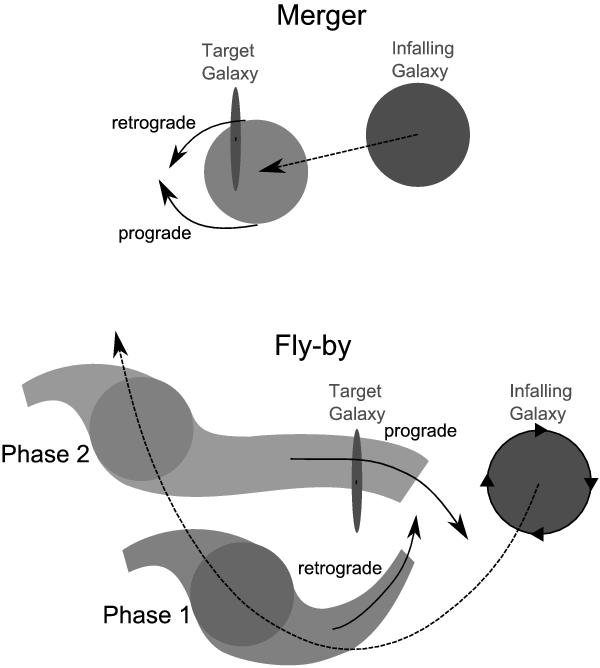Fig. 13

Sketch of the typical origins for pro- and retrograde material in merger (top) and fly-by (bottom) interactions. In both cases, the infalling galaxy starts on the right and follows the path sketched by the dashed line. The direction of spin of its disc is indicated by the arrows along the edge in the fly-by sketch (prograde with respect to the orbit), for mergers both orientations of spin were modelled. The target galaxy is seen edge on. In a merger, the collision of the two galaxies involves particles of the infalling galaxy to pass the centre of mass of the target on both sides, resulting in pro- and retrograde orbits. As a merger might involve several passings of the galaxies before the final merging, other sources of pro- and retrograde material, like tidal tails, also play a role. In a fly-by, after the galaxies pass, the infalling one developes tidal tails. The tidal material streaming towards the target galaxy first follows back the infalling’s path, resulting in retrograde material appearing first (Phase 1). Later, as the galaxies further depart from each other, the tidal tail is swept over the target’s centre of mass. This changes the orbital direction of the particles falling towards the target galaxy, making their orbits prograde (Phase 2).
Current usage metrics show cumulative count of Article Views (full-text article views including HTML views, PDF and ePub downloads, according to the available data) and Abstracts Views on Vision4Press platform.
Data correspond to usage on the plateform after 2015. The current usage metrics is available 48-96 hours after online publication and is updated daily on week days.
Initial download of the metrics may take a while.


